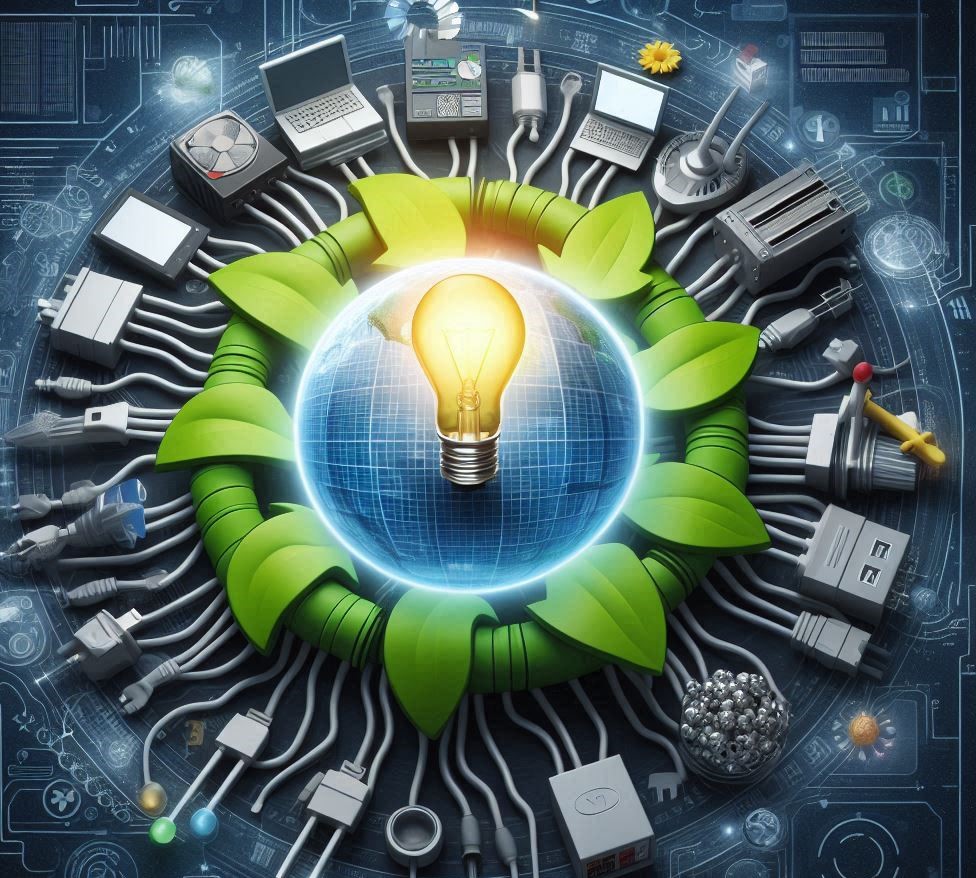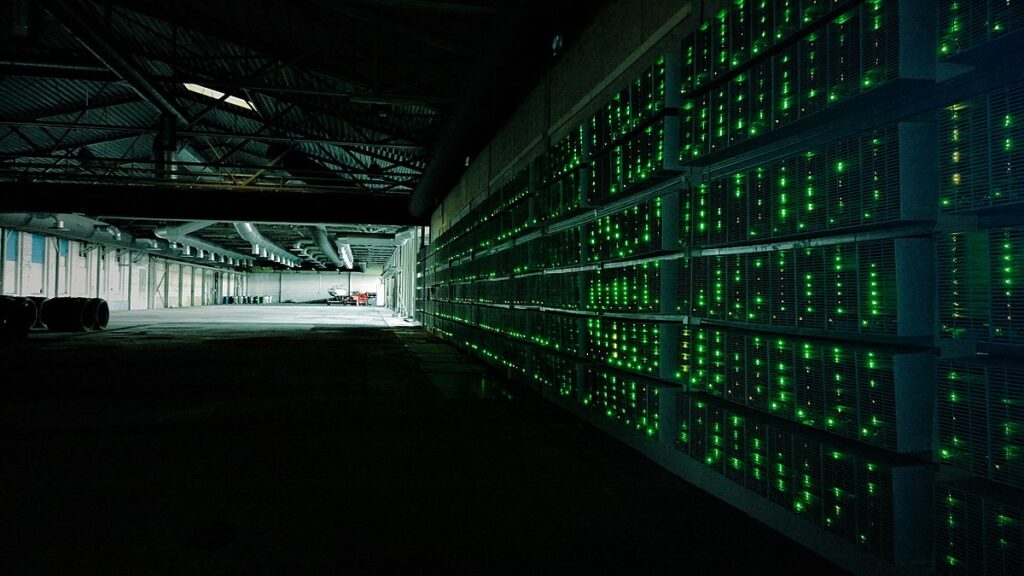Contents
Top 5 Innovations Transforming Energy-Efficient Computing for a Sustainable Future

Introduction
In the digital age, computing systems are the backbone of virtually every industry, driving advancements and fostering connectivity. However, the energy consumption associated with these systems has become a significant concern. As we continue to witness the exponential growth of data centers, cloud computing, and the Internet of Things (IoT), the environmental impact of our digital infrastructure cannot be ignored. Energy-efficient computing, often referred to as green technology or sustainable computing, aims to minimize the energy consumption of computing systems while maintaining or even enhancing their performance. In this blog post, we will explore the latest innovations in energy-efficient computing and their potential to create a more sustainable future.
The Importance of Energy-Efficient Computing
The energy consumption of computing systems has been rising steadily, leading to increased carbon emissions and higher operational costs. Data centers alone account for a significant portion of global electricity usage. According to a report by the International Energy Agency (IEA), data centers consumed about 200 terawatt-hours (TWh) of electricity in 2020, accounting for approximately 1% of global electricity demand. With the continuous growth of digital technologies, this figure is expected to rise.

Energy-efficient computing addresses these challenges by developing technologies and strategies that reduce energy consumption, thereby lowering carbon emissions and operational costs. The transition to energy-efficient computing is not only an environmental imperative but also a strategic business decision that can lead to significant cost savings and enhanced performance.
Top 5 Innovations in Energy-Efficient Computing
1. Advanced Processor Architectures
One of the key areas of innovation in energy-efficient computing is the development of advanced processor architectures. Traditional processors, such as those based on the x86 architecture, are not optimized for energy efficiency. In response, researchers and companies are developing new architectures that prioritize energy efficiency without compromising performance.
– ARM Architecture: The ARM architecture is known for its energy-efficient design. ARM processors are widely used in mobile devices, embedded systems, and increasingly in data centers. Their ability to deliver high performance at low power consumption makes them a popular choice for energy-efficient computing.
– The ARM Cortex-A series, for example, is designed for high-performance applications, while the Cortex-M series is optimized for energy efficiency, making it suitable for embedded and IoT devices.
– RISC-V Architecture: RISC-V is an open-source instruction set architecture that offers flexibility and customization. Its energy-efficient design has gained attention in the computing industry, with applications ranging from IoT devices to high-performance computing.
– RISC-V allows for custom extensions, enabling designers to optimize processors for specific energy-saving features without the overhead of legacy instructions.
2. Low-Power Memory Technologies
Memory systems are a major contributor to the energy consumption of computing systems. Traditional memory technologies, such as DRAM, consume significant amounts of power. Innovations in low-power memory technologies are helping to address this challenge.
– Non-Volatile Memory (NVM): NVM technologies, such as MRAM (Magnetoresistive RAM) and ReRAM (Resistive RAM), offer the advantage of retaining data even when the power is turned off. This reduces the need for constant power supply, leading to lower energy consumption.

– MRAM combines the speed of SRAM, the density of DRAM, and the non-volatility of flash memory, making it a versatile and energy-efficient option.
– LPDDR (Low-Power Double Data Rate) Memory: LPDDR memory is designed to operate at lower voltages and with reduced power consumption. It is commonly used in mobile devices and is being adopted in other computing applications to enhance energy efficiency.
– The latest iterations, such as LPDDR5, offer higher data rates and improved power efficiency compared to their predecessors, making them suitable for high-performance and energy-sensitive applications.
3. Energy-Aware Software Development
Software plays a crucial role in determining the energy efficiency of computing systems. Energy-aware software development focuses on optimizing software to reduce energy consumption without compromising functionality or performance.
– Energy-Efficient Algorithms: Algorithms that are designed to minimize computational complexity and resource usage can significantly reduce energy consumption. This includes optimizing data processing, reducing redundancy, and improving code efficiency.
– Examples include algorithms for efficient data sorting, low-power signal processing, and machine learning models that minimize the number of operations required for inference.
– Dynamic Voltage and Frequency Scaling (DVFS): DVFS is a technique used to adjust the voltage and frequency of a processor based on workload requirements. By dynamically scaling these parameters, it is possible to reduce energy consumption during periods of low activity.
– Modern processors often include multiple power states (P-states) that allow for fine-grained control over power consumption based on real-time performance demands.
4. Green Data Centers
Data centers are among the largest consumers of electricity in the computing industry. Green data centers utilize innovative technologies and practices to minimize energy consumption and reduce their environmental impact.
– Liquid Cooling Systems: Traditional air cooling systems in data centers are energy-intensive. Liquid cooling systems, which use liquids such as water or dielectric fluids to dissipate heat, are more energy-efficient and effective in maintaining optimal operating temperatures.

Image by : wikimedia commons
– Direct-to-chip liquid cooling solutions, where the cooling fluid directly contacts the processor or other heat-generating components, can dramatically improve cooling efficiency.
– Renewable Energy Integration: Green data centers often incorporate renewable energy sources, such as solar or wind power, to offset their electricity consumption. This not only reduces carbon emissions but also enhances the sustainability of the data center operations.
– Companies like Google and Microsoft have committed to powering their data centers with 100% renewable energy, setting a precedent for the industry.
5. Edge Computing
Edge computing is an emerging paradigm that brings computation and data storage closer to the source of data generation, such as IoT devices. By processing data at the edge of the network rather than in centralized data centers, edge computing can reduce latency, bandwidth usage, and energy consumption.
– Edge AI: The integration of AI capabilities at the edge enables real-time data processing and decision-making without the need for constant communication with centralized servers. This reduces the energy required for data transmission and enhances overall system efficiency.

– Edge AI accelerators, such as the NVIDIA Jetson series and Google’s Edge TPU, are designed to deliver high performance with minimal power consumption.
– Energy-Efficient Edge Devices: Edge devices, such as sensors and gateways, are designed to operate with minimal power consumption. Advances in low-power processors and energy-harvesting technologies contribute to the development of energy-efficient edge computing solutions.
– Energy-harvesting technologies, such as solar panels or piezoelectric generators, allow edge devices to operate autonomously in remote or resource-constrained environments.
Challenges and Considerations
While the innovations in energy-efficient computing hold great promise, there are several challenges and considerations that need to be addressed:
– Scalability: Ensuring that energy-efficient solutions can be scaled to meet the demands of large-scale computing environments is essential. Research into scalable architectures and infrastructure will be critical.
– Cost: The initial investment required for implementing energy-efficient technologies may be high, but the long-term cost savings and environmental benefits make it a worthwhile endeavor. Companies need to balance short-term costs with long-term gains.
– Interoperability: Different components and systems need to work seamlessly together to achieve optimal energy efficiency. Standardization and collaboration among technology providers are crucial to ensure compatibility and interoperability.
– Awareness and Adoption: Raising awareness about the importance of energy-efficient computing and promoting its adoption across industries is vital for driving sustainable practices. Education and advocacy efforts should target both businesses and consumers.

Image by : wikimedia commons
Future Directions
The future of energy-efficient computing is promising, with continuous advancements in technology driving new possibilities. Here are some emerging trends and future directions:
– AI and Machine Learning for Energy Optimization: AI and machine learning algorithms can be used to optimize energy consumption by predicting workload patterns and dynamically adjusting resource allocation. This includes intelligent scheduling, predictive maintenance, and automated energy management systems.
– Quantum Computing: Quantum computing has the potential to revolutionize energy-efficient computing by solving complex problems with significantly lower energy consumption compared to classical computing. As quantum technologies mature, they could offer transformative solutions for energy-intensive applications.
– Energy Harvesting Technologies: Research into energy harvesting technologies, such as piezoelectric and thermoelectric materials, aims to develop self-powered computing devices that can operate without external power sources. These technologies can enable sustainable operation in remote or off-grid environments.
– Sustainable Manufacturing: Innovations in sustainable manufacturing processes for electronic components can reduce the environmental impact of producing energy-efficient computing systems. This includes the use of eco-friendly materials, reducing waste, and improving recycling processes.
Conclusion
Energy-efficient computing represents a crucial step towards creating a sustainable and environmentally friendly digital infrastructure. By embracing advanced processor architectures, low-power memory technologies, energy-aware software development, green data centers, and edge computing, we can significantly reduce the energy consumption of computing systems. As we continue to innovate and adopt these technologies, it is essential to address the challenges and promote widespread awareness and adoption. The future of energy-efficient computing is bright, and it holds the potential to transform the way we interact with technology while preserving our planet for future generations.
Also Check : Ethical AI


Your articles always make me think and reflect on my own life Thank you for prompting me to be introspective and make positive changes
The design and layout of this blog are so aesthetically pleasing and user-friendly It’s a pleasure to navigate through